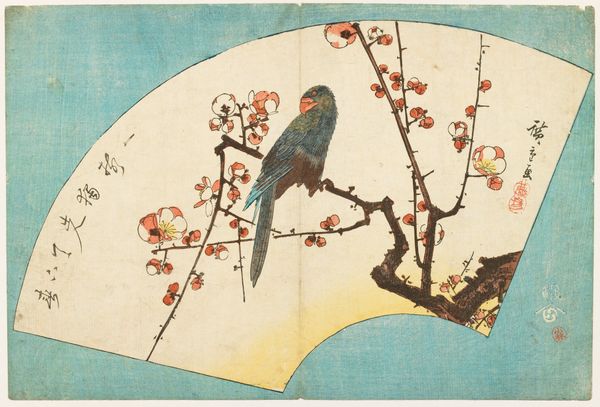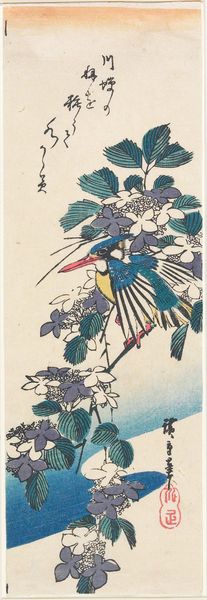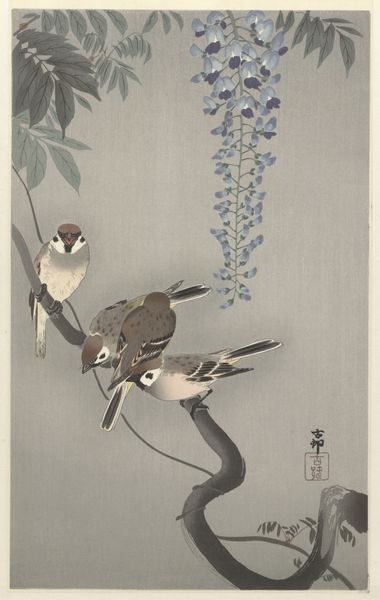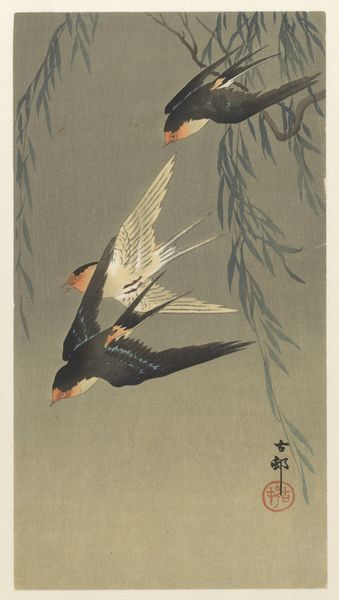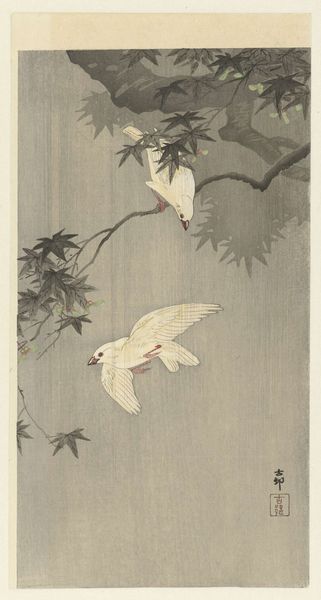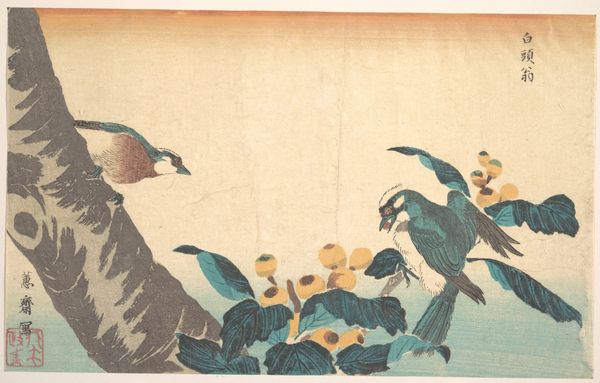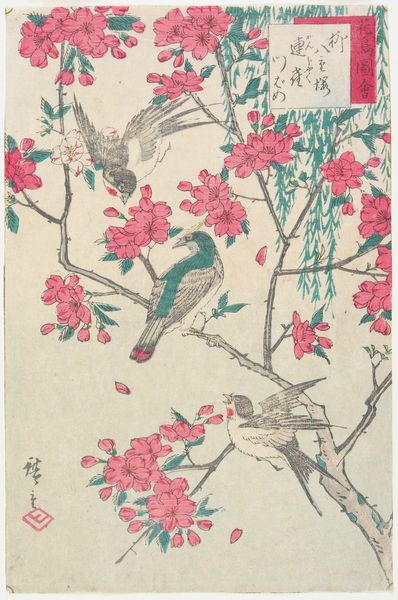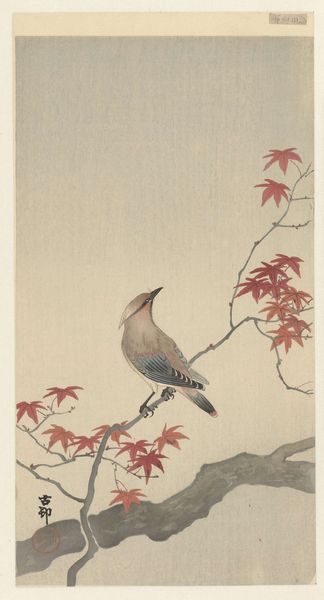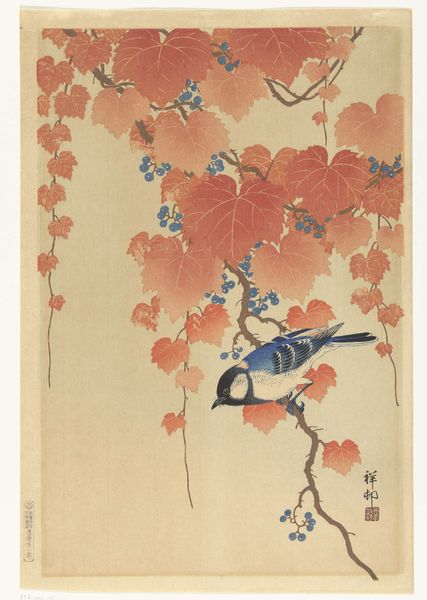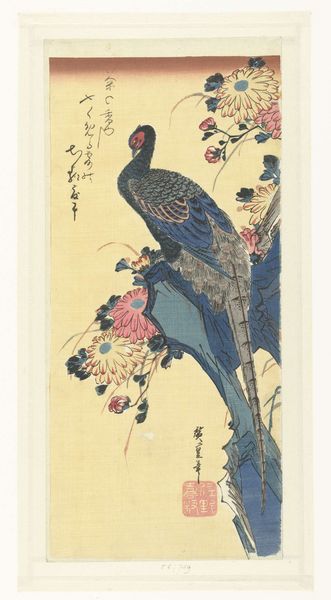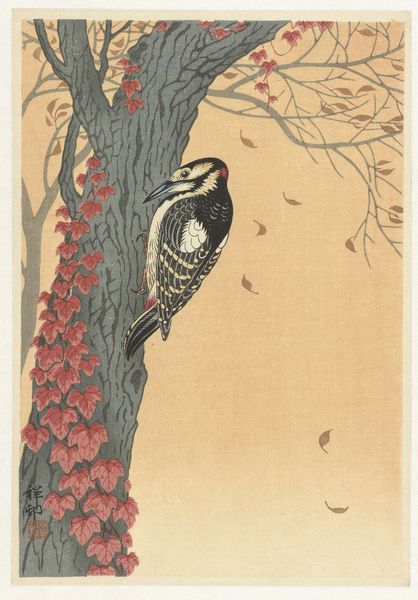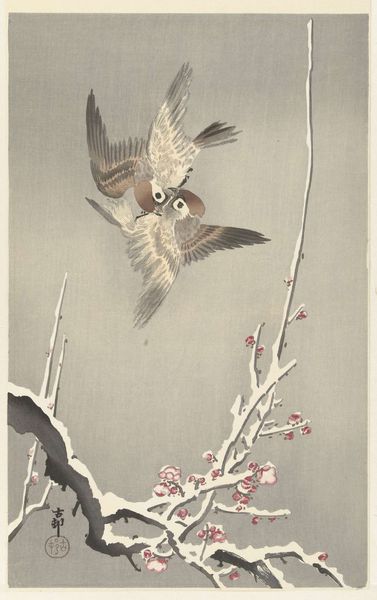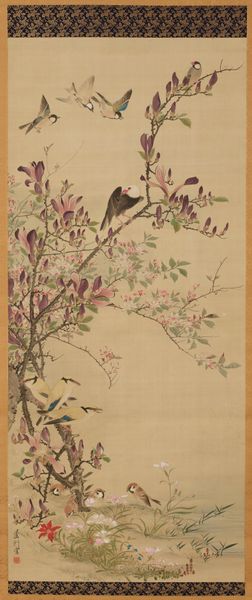
Dimensions: height 380 mm, width 255 mm
Copyright: Rijks Museum: Open Domain
Editor: Here we have Ohara Koson’s “Vliegenvangers op een nandinastruik,” or “Flycatchers on a Nandina Branch,” created sometime between 1925 and 1936. It’s a woodblock print. The birds look so delicate perched amongst the snow-covered branches and bright red berries. What do you see in this piece that I might be missing? Art Historian: Well, the first thing that strikes me is the context in which Koson was working. This print emerged during a period of significant cultural exchange between Japan and the West, a time when traditional Ukiyo-e techniques were being re-evaluated and adapted for a global audience. Have you considered the impact of Japonisme on this particular work? Editor: Japonisme? I've heard the term, but I'm not sure I fully grasp it. Art Historian: Japonisme refers to the Western fascination with Japanese art and design in the late 19th and early 20th centuries. Artists in Europe and America were heavily influenced by Japanese woodblock prints. But Koson here seems to be turning that dynamic around. He is taking a traditional Japanese art form and adapting it, perhaps subtly, to appeal to that very Western gaze. Think about the composition. How does the framing and perspective compare to other Ukiyo-e prints you've seen? Editor: Now that you mention it, the close-up view of the birds and branches, the flattening of the picture plane…it feels different. Almost like a response, or a commentary, on Western perceptions of Japanese art. Art Historian: Precisely! It makes you consider, who is Koson really creating this for, and what message is embedded in this artistic dialogue? Editor: I never would have considered the back-and-forth dynamic like that. It gives the image a whole new layer of meaning. Thanks so much. Art Historian: Absolutely! Thinking about art as a conversation between cultures, identities, and historical moments always reveals so much. It encourages us to question not only what we see but *how* and *why* we see it.
Comments
No comments
Be the first to comment and join the conversation on the ultimate creative platform.
